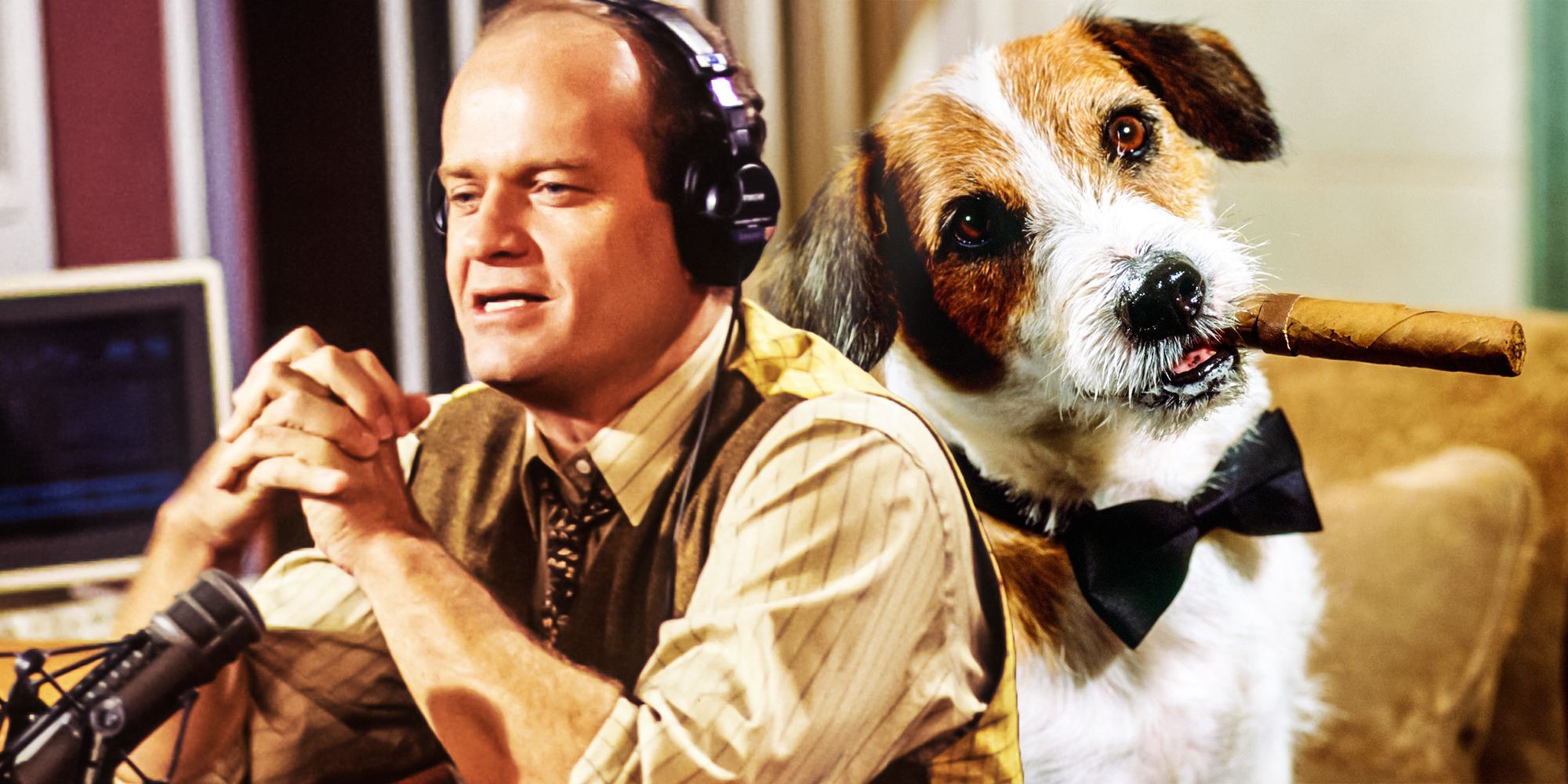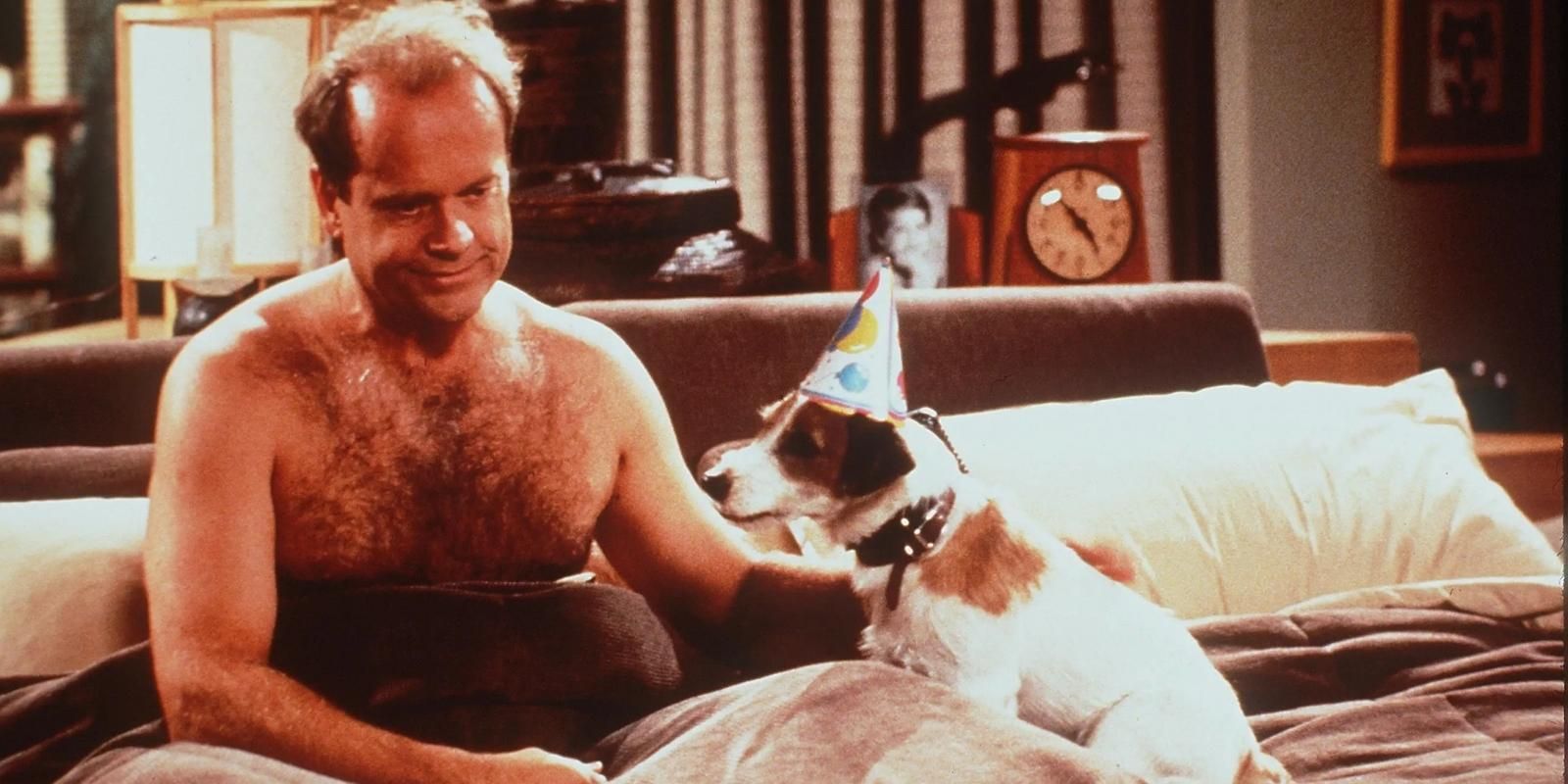Eddie has always been a beloved part of Frasier, but behind-the-scenes stories make the dog’s role even better. Although Kelsey Grammer and the rest of the human ensemble immediately come to mind when talking about Frasier, the show wouldn’t be the same without Eddie. However, the show dog playing Eddie wasn’t the most liked member of the cast, and in turn, he did not get on well with his co-stars either.
The Jack Russell Terrier was introduced in the sitcom's pilot episode, much to the chagrin of Kelsey Grammer's Frasier. Eddie was the loyal companion of Martin Crane (John Mahoney), providing him solace during his darkest moments, but the dog's habit of staring at Frasier didn’t endear him to the title character. Eddie was a regular presence throughout Frasier’s 11 seasons, but the cast also wasn’t always thrilled with the dog’s overly professional attitude.
Frasier’s cast and crew discussed Eddie and his performer, Moose, during Vanity Fair’s oral history of the show. Although a commendable actor, Moose wasn’t affectionate towards the cast, not even Mahoney. Shooting days were more difficult when Eddie was involved in a storyline, and Grammer has humorously joked about Eddie’s popularity eclipsing his own. Despite problems with the dog, Eddie played an important role in Frasier, and Grammer has acknowledged his positive effect on children.
According to Frasier co-creator David Lee, Eddie was added because the creative team was informed that test audiences respond well to kids and dogs. Reportedly, Grammer wanted neither in Frasier, but as Lee recalls, “We cynically thought, let’s put a dog in to get the scores up.” Therefore, Eddie was born, although Moose wasn’t without his problems. Daphne Moon actor Jane Leeves described him as a “complicated little fellow” who would often improvise and go “completely nuts." He was never a playful dog, even with his own son, Enzo, who replaced Moose in later seasons. Co-creator Peter Casey remembered, “Moose and Enzo hated each other. They couldn’t be on set together. Apparently, it was one of those classic parent-child Hollywood rivalries.” Ironically, even John Mahoney struggled to receive affection from Moose. According to Grammer, Mahoney once refused to put Moose on his lap, exclaiming, “No! The son of a b**** always bites me.”
Mahoney clarified his relationship with Moose to the Los Angeles Times, saying, “I never thought of Eddie as a dog. I thought of him more as an actor.” The performer behind Frasier's Martin Crane explained that the dog was so highly trained that he only responded affectionately to his owner and was not fond of being touched by anyone else. Moose didn’t care for his co-stars, but Eddie proved very popular, even appearing on magazine covers. Speaking to The Washington Post, Grammer admitted to being jealous, even speculating about Moose receiving the most fan mail. He stated, “I think he does. I know it’s very popular for them to say he gets more than I do.” It appears Frasier Crane’s disdain for Eddie might have spilled over into real life, which likely only improved Frasier. The psychiatrist often complained about Eddie and others’ love for him, and Grammer’s frustrations could well have added to their onscreen animosity.
Of course, Frasier could be friendly toward Eddie, even confiding in him during a low moment. Likewise, the titular Fraiser star made clear he had no ill feelings towards the dog but pointed out shooting often “takes twice as long” when Eddie is involved. He was also fully aware of Eddie’s value to Frasier, adding, “It takes care of kids a lot. If the dog grabs them… they end up thinking anyway, listening to the show... it’s the best of both worlds.” Eddie helped demonstrate Martin’s softer side and provided a playful foil to Frasier’s arrogance. Moose wasn't the warmest companion, but this makes his lovable performance as Eddie even more impressive.


